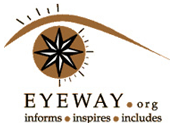The International Agency for the Prevention of Blindness (IAPB), an alliance of eyecare organisations across the world, launched its “IAPB Vision Atlas” on World Sight Day on October 12. The IAPB Vision Atlas is a compilation of the latest global data and evidence on blindness and vision impairment. According to the Atlas, at least 36 million people worldwide are affected by blindness and 217 million people have moderate or severe distance vision impairment (MSVI). Of those with blindness and MSVI, 124 million people have uncorrected refractive errors and 65 million have cataract — more than 75 per cent of all blindness and MSVI is avoidable.
“The disturbing increase in the number of people with vision loss worldwide shows that our efforts at preventing vision loss are being eroded by an increasing and ageing global population,” said Peter Ackland, CEO, IAPB. A new paper by the Vision Loss Expert Group (VLEG) published in the Lancet shows that decades of declining “avoidable blindness” — those with uncorrected refractive errors and cataract — is reaching a plateau and is projected to increase between 2015 and 2050.
Professor Dr S Natarajan, Vice-President of All India Opthalmological Society and Chairman of Aditya Jyot Hospital, who was in Pune to attend a state-level opthalmological conference, said that as many as 8.8 million people in India were found to be blind in 2015 and another 47.7 million people had moderate and severe vision impairment.
Cataract is among the major causes of blindness in India and according to IAPB, at least 61,03,062 cataract surgeries were performed in 2014. The prevalence of Diabetic Retinopathy in India is approximately 5.6 million while there are approximately 11.2 million people aged 40 years and older with glaucoma in India, Professor Natarajan said. It is also estimated that the number of individuals with unilateral corneal blindness in India will increase to 10.6 million by 2020.
According to estimates by the National Programme for Control of Blindness (NPCB), there are currently 120,000 corneal blind people in the country. IABP’s call for action to leaders, policy makers and practitioners is crucial as treating eye diseases and managing vision loss at individual and societal levels should be integrated within general health systems, Dr Natarajan said.
There is a need to make eye health affordable, he said, adding that several organisations are working on projects to prevent avoidable blindness in India. For instance, AJ-DRUMSS: Aditya Jyot-Diabetic Retinopathy in Urban Mumbai Slums is a study to estimate the prevalence of diabetic retinopathy while Arvinda Eye Care System (AECS) in South India takes eyecare service to the doorstep of the community.
Meanwhile, a new section on the IAPB Vision Atlas looks at the possibility of achieving the World Health Organisation’s Global Action Plan target of 25 per cent reduction in avoidable vision impairment (blindness and MSVI combined) by 2019. The Atlas will help eyecare organisations, ministries of health, policy makers and eye health advocates compare vision impairment trends over time and in different parts of the world. The Atlas will also help track countries making progress, and those that are falling behind.
Source: http://indianexpress.com/article/cities/pune/world-sight-day-avoidable-blindness-on-the-rise-in-india-4887919/

Facebook comments